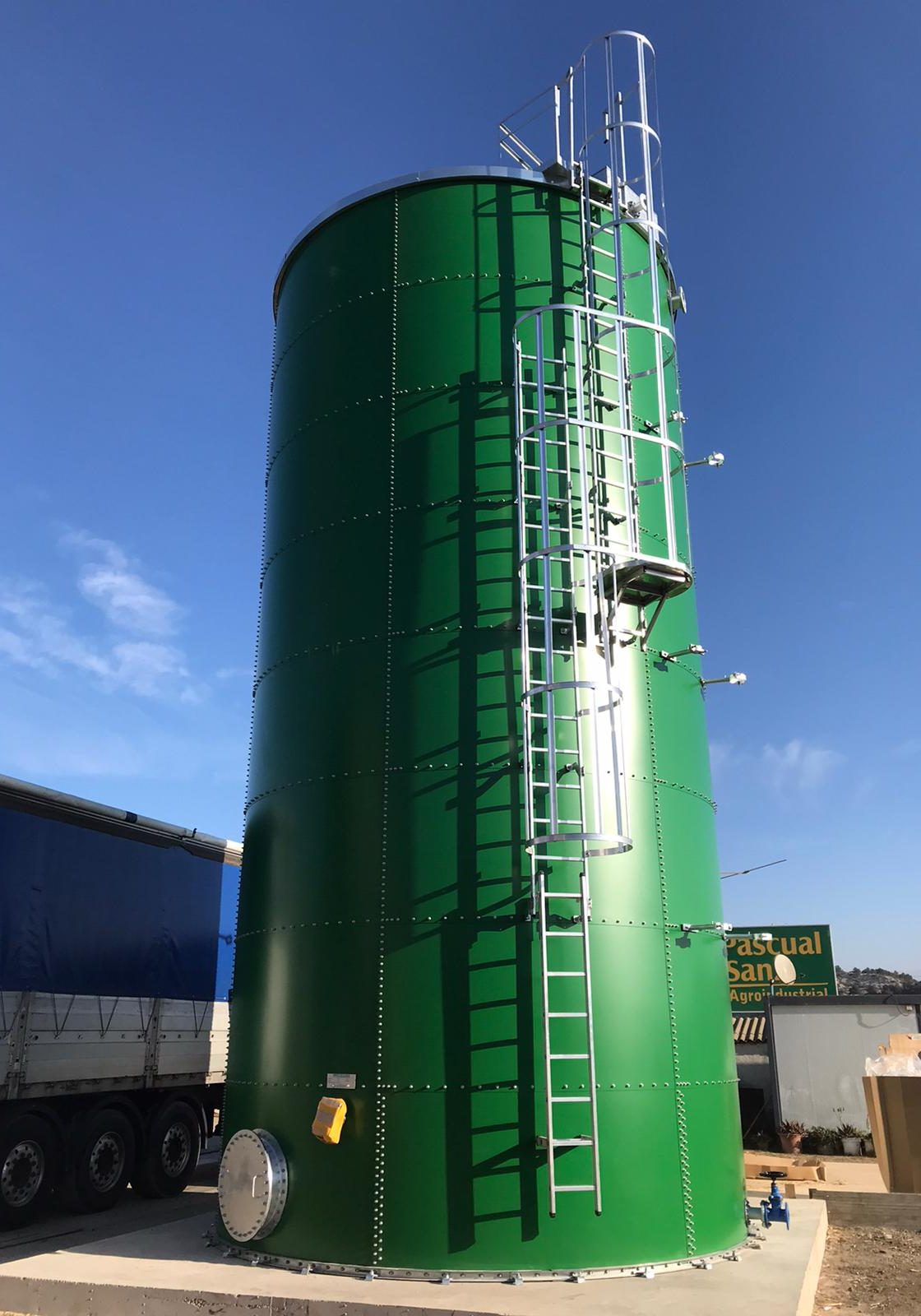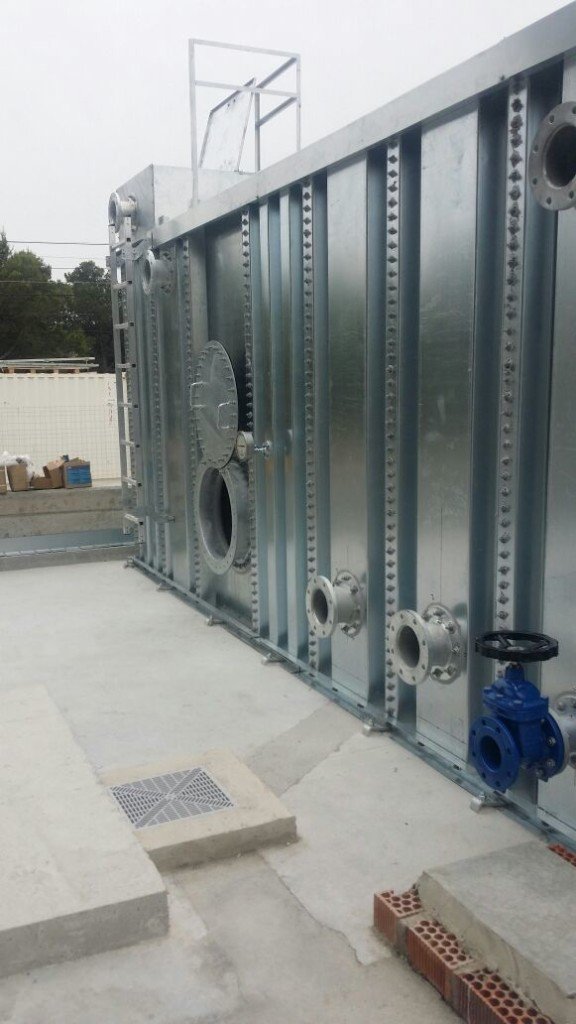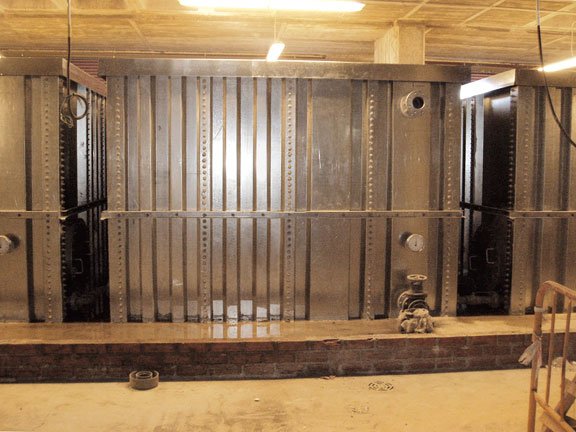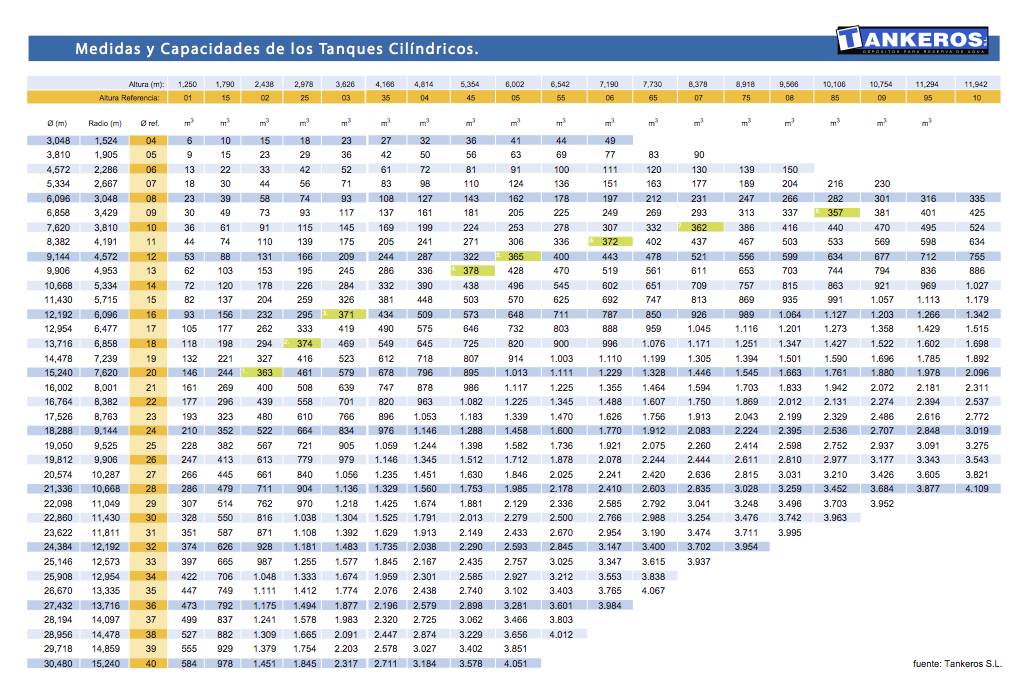In this section, you can see the types of tanks we offer, as well as all of their dimensions and capacities – considering the different model structures and sizes of each of them. Among the different tanks that we make available, we differentiate between cylindrical and rectangular ones here, as well as the metal variety.
TYPES OF TANKS: BOLTED METAL TANKS
BOLTED METAL TANKS AND VESSELS: TYPES OF TANKS
Metal water tanks, regardless of the shape of their structure, are a type of tank that offers several benefits. This is a type of metal water vessel in which the water retains its properties intact and does not become contaminated. The metal protects the water inside from possible bacteria contamination and ultraviolet rays.
Likewise, these metal water tanks go through rigorous manufacturing and installation quality controls in order to ensure they comply with the specifications for which they are built. Our bolted metal tanks are supplied with the connections and accessories needed for their installation, using the client's measurements, quality requirements, and keeping in mind the standards needed by the client. In short, these are the highest quality sheet metal tanks.
We make stainless steel and aluminum tanks. Nevertheless, inside our water tanks there are some components and parts (like the emptying and filling valves and the coating layers) that may be made up of other materials such as iron or PVC.

Details and Capacities
CYLINDRICAL TANKS
The capacity ranges from 7 to 4,000 m3, depending on the diameter (which varies from 3 m to 30.5 m) and the height (from 1.25 m to 12 m). See the dimension and capacity tables. To achieve the desired capacity in a confined space, several cylindrical water tanks can be built together and aligned or grouped in such a way that they are connected to each other.
These cylindrical tanks are built with galvanized steel plates measuring 2.5m long by 1.25m wide and they overlap one another. The plates, whose thicknesses depend on the diameter and height of the tank, are manufactured in accordance with the EN 10142 and EN 10111:1998 standards.
The sheeting is punched around its perimeter to fit perfectly at the site without the need for subsequent machining. Assembly is done with special screws arranged with the round head on the inside and the nut on the outside.
The plates, whose thicknesses depend on the diameter and height of the cylindrical tank, are manufactured in accordance with the UNE-EN-10130, UNE-EN-10025, and UNE-EN-10149-2 standards. The metal profiles are subjected to a continuous galvanizing treatment that exceeds 275 grams of zinc per m2, in accordance with EN 10142 and UNE-EN-10346. The rest of the parts: plates, screws, and flanges are hot-dip galvanized (Z600) in accordance with the EN ISO 1461 standard.
Cylindrical tanks contain large quantities of water with the optimum pressure so that the liquid can be protected from external phenomena and agents. For this reason, cylindrical tanks are always a guarantee of quality. We invite you to request more information about how to plan for the installation and assembly of cylindrical water tanks.
Details and Capacities
QUADRANGULAR TANKS
The main advantage of quadrangular water tanks is the ease with which they adapt to the space where they are installed (square, rectangular, "L" shaped, etc.). They even make it possible to go around columns or leave the column inside the tank itself. They are perfect for garages, boiler rooms, rooftops, etc. Thus, these quadrangular tanks yield maximum capacity in minimal space due to their ergonomic shape.
They consist of a single ferrule made of corrugated sheets and measuring up to 2.5m high and 1m wide. Depending on their dimensions, quadrangular water tanks are internally reinforced with tensioners or transversal strips. Material specifications are the same as for cylindrical tanks. Thus, quadrangular vessels can be used to store drinking water, for irrigation, and even for wastewater.
At Tankeros, you can find the best quadrangular water tanks with the most complete installation and maintenance service.
Cylindrical tanks
TIPOS DE TANQUES: MEDIDAS Y CAPACIDADES
The model number of each tank is made up of a four-digit number. The first two digits correspond to the number of plates in the circumference of the tank and the last two digits tell the number of ferrules and half ferrules in the tank's height.
- 0835: eight plates in the tank's circumference and three and a half ferrules in the tank's height.
- 1205: twelve plates in the tank's circumference and five ferrules in the tank's height.
Various models are available for the required capacity.
Example:
For 365m3, you can choose from the following models:
- 2002: twenty plates in the tank's circumference / two ferrules / 363 m3
- 1825: eighteen plates in the tank's circumference / two and a half ferrules / 374 m3
- 1603: sixteen plates in the tank's circumference / three ferrules / 371 m3
- 1345: thirteen plates in the tank's circumference / four and a half ferrules / 378 m3
- 1205: twelve plates in the tank's circumference / five ferrules / 365 m3
- 1106: eleven plates in the tank's circumference / six ferrules / 372 m3
- 1007: ten plates in the tank's circumference / seven ferrules / 362 m3
- 0985: nine plates in the tank's circumference / eight and a half ferrules / 357 m3
The materials are optimized (and, therefore, the price is better) in the more proportional models in terms of their diameter and height.




